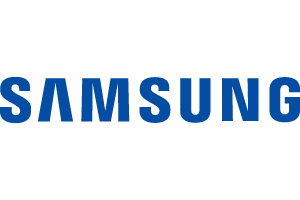How to Capture Leads’ Attention Without Relying on Gimmicks
Submitted by Anonymous (not verified) on
At some point, we all find out what it’s like to be the target of lead generation. You download a whitepaper or subscribe to a blog out of curiosity; days later, you get an email in your inbox from the company’s sales team. As a salesperson, you understand these tactics. But when the shoe’s on the other foot, the last thing you want to do is give “just 10 minutes of your time” to a company that has — in your mind — contacted you out of the blue.
In the past, people felt guilty about not replying to emails or returning phone calls. But those days are long gone. We, as businesspeople, are now desensitized to that guilt. We’ve become averse to anything that’s irrelevant or nonurgent — and the same is true of our own prospective customer base.
What does that mean for sales teams? Traditional lead engagement tactics are waning in their effectiveness. If you really want to rise above the noise, you need to think beyond tired automated follow-ups (e.g., “Re: Our Call” or “Does this mean goodbye?” email subject lines). People are on to these ploys, and they’re turned off by such laziness. Your average business professional has both high standards and little tolerance for any communication he thinks will waste his time.
As sales teams become more cognizant of this, many are trying to grab their leads’ attention through cutesy gimmicks. I once received a full-size oar (yes, for a boat) from a company that wanted me to know I would never “be up a creek without a paddle” if I used its service. The approach was unique; I’ll give it that. But it didn’t tell me anything real about the business — meaning it didn’t motivate me to act.
I’m willing to bet your customers won’t go for similar tactics, either. If you’re using these types of maneuvers, it’s time to trade them in for a more authentic approach.
Ditching the Gimmicks for Authenticity
The most important thing to consider when communicating with leads is TAT: timing, attention, and trust. Let’s break down what these mean from a marketing and sales perspective:
Timing: People are incredibly busy these days. If you call or email when they’re in the midst of a major project or on their way to a meeting, they’ll likely ignore your message. Even if they are interested, there’s a good chance that “Respond to X sales query” will soon get buried by more important to-dos. Given how quickly businesses switch gears, a hot lead today could go cold tomorrow, so it’s critical that you connect at the right time.
Attention: We all have too many things to do and not enough time to get them done. Your communication attempts must be creative and relevant enough to make someone want to speak with you right now.
Trust: Trust is difficult to earn, especially when you’re “meeting” leads online and don’t have the opportunity to establish in-person rapport. Gaining someone’s trust via phone, email, or text can be tricky, but it’s possible. It’s all in how you frame the conversation, which we’ll address shortly.
If you nail all three, communicating with leads won’t require any gimmicks; your sales pitch will come off as relevant and sincere, catching even the busiest leads’ attention. Actually putting that trifecta into practice might sound like yet another balancing act you have to manage, but it’s easier than you might think — again, it all comes back to being legitimate with your leads.
Here are three ways to make sure TAT is your No. 1 lead communication tool:
1. For time: Be persistent, but not annoying. Most people don’t mind persistence as long as it’s not aggressive. No one wants to be stalked. But every one of us appreciates dealing with a confident pro who knows how to follow up, particularly when we’re interested in a service but haven’t had a chance to reach out yet.
2. For attention: Be creative, but not gimmicky. Corny subject lines and email content used to come across as unique and playful. Now, those things just seem hokey.While you need to find ways to differentiate yourself, leave the gimmicks to your competitors. Use interesting, engaging language to capture people’s attention, and make a succinct pitch once you have it. People will like that you’re witty but direct, a combination that inspires both confidence and interest.
3. For trust: Be friendly, but not buddy-buddy. Whether in real life or in the digital world, we are hardwired to be suspicious of people who are too friendly. There’s nothing wrong with being good-natured, courteous, and even funny. But when someone who wants to sell us something acts like our BFF, instinct tells us to run the other way.
Lead communication may seem challenging, but it ultimately comes down to respect and authenticity. (Remember that you’ve been a lead before, too.) If you have a great product or service and are clear on how you’ll help customers, you should feel confident sharing that with your leads. Rather than rely on showy tactics, respect their time by being forthright, creative, and real — you’ll be surprised at how well they respond.
Bob La Loggia is the founder and CEO of AppointmentPlus, a fast-growing SaaS business based in Scottsdale, Arizona. His company has won a number of awards, including CareerBuilder’s Best Places to Work award. Bob is a serial entrepreneur who’s passionate about his business and helping Arizona develop a world-class startup ecosystem.






